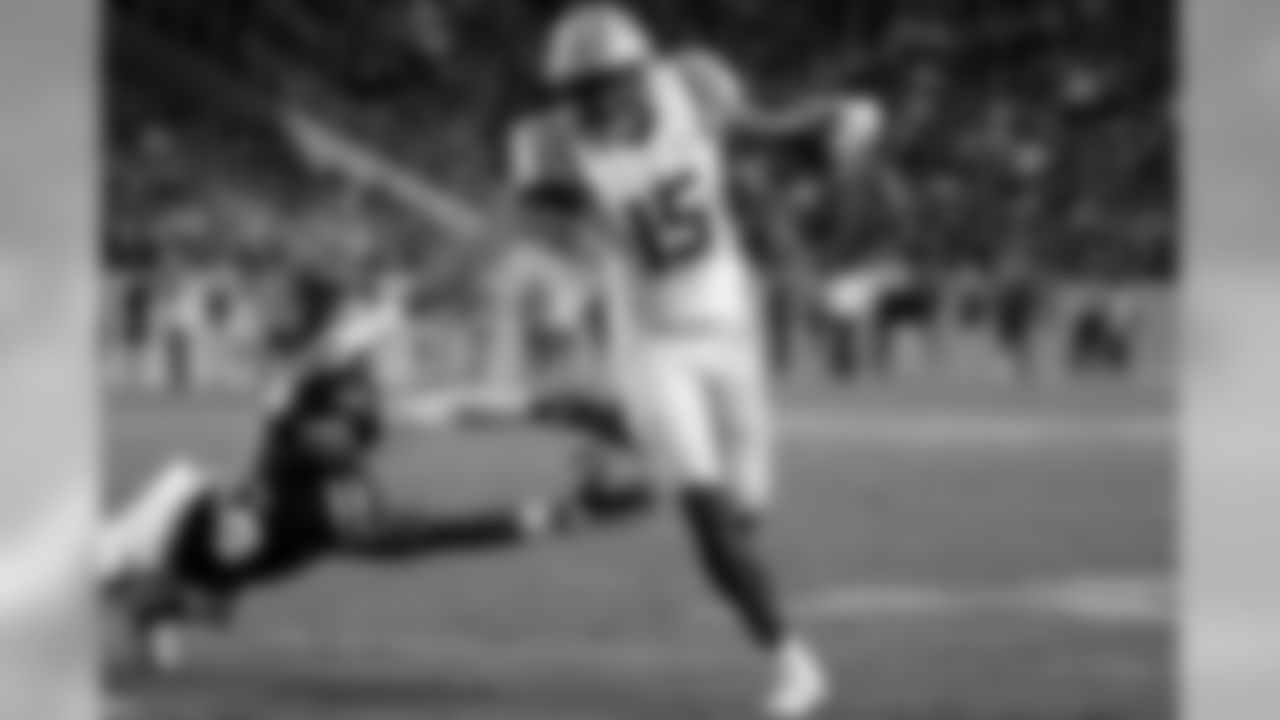Wherever he is drafted, Western Michigan receiver Corey Davis will begin his NFL career the way he finished college.
Playing in NFL stadiums.
Davis looked like a pro for the Broncos to become one of the top three receiving draft prospects along with Mike Williams of Clemson and John Ross of Washington.
Davis left WMU in style. He had eight catches for 144 yards and a touchdown in a 29-23 win over Ohio U in the Mid-American Conference championship at Ford Field, home of the Detroit Lions. Then he closed out his career in the Cotton Bowl with six catches for 73 yards and a TD in a loss to Wisconsin at AT&T Stadium, home of the Dallas Cowboys.
View photos of Mike O'Hara's top WR prospects.

Clemson

Western Michigan

Washington

Ohio State

East Carolina

Eastern Washington

Penn State

USC

Alabama

Cal

Louisiana Tech

North Carolina

Western Kentucky

LSU

Michigan

Oklahoma

Virginia Tech

Grambling
In four years Davis had 331 career catches for a Division I 5,278 yards.
He picked a good pro to emulate – Atlanta Falcons star Julio Jones.
"He's kind of a freak of nature, so it's kind of hard to emulate your game after someone like that," Davis said at the Combine. "But I like the way he plays. He's big, physical, strong."
Lions receiver draft priority: Adding a speed threat would upgrade the unit.
Position draft strength: It's lacking any franchise-caliber players.
Lions' receiver draft breakdown: Depth chart, numbers history, stats, capsule highlights of the top players and other notable prospects and the Spotlight Player.
Lions depth chart: Returning starters – Golden Tate, Marvin Jones Jr.; returning backups – TJ Jones, Jace Billingsley (practice squad most of 2016); Ryan Spadola (IR, 2016); Andrew Turzilli (practice squad, 2016). Additions – Jared Abbrederis, Keshawn Martin.
Numbers history: It's the No. 2 drafted position on offense, behind offensive line when tackles, guards and centers are included together. In 2016 32 receivers were drafted compared to 41 offensive linemen – 22 tackles, 11 guards and eight centers.
1. Mike Williams, Clemson: A big target at 6-4, 218, with long arms, but not a speed burner as was shown in his Pro Day workout with two times of 4.53 and 4.51 in the 40. A productive 2016 season for the national champs vaulted him into contention to be the first receiver drafted. Williams had 98 catches for 1,381 yards and 11 TDs. As a 2013 freshman he played all 13 games. A bizarre injury in 2015 put him out for the season. He broke a bone in his neck when he collided with the goal post after making a TD catch but returned to full duty as a fourth-year junior in 2016.
2. Corey Davis, Western Michigan: Effects of an ankle injury kept him from working out at the Combine and at his school's Pro Day, but his four-year production should speak for itself. His stats improved every year at Western, which wasn't easy to do considering had had 67 catches for 941 yards as a freshman in 2013. He followed that with catch and yards totals of 78-1,408, 89-1,429 and 97-1,500 from 2014- through 2016. He had 52 career receiving TDs, with 19 in 2016. He's tough, strong and competitive.
3. John Ross, Washington: The fastest receiver in the draft, with a Combine record 4.22 seconds in the 40. However, he had one big season at Washington – 76 catches, 1,122 yards and 17 TDs for the Huskies as a fourth-year junior in 2016. He can stretch the field, and he's a legitimate football player with speed, not just a track sprinter running routes. He'll stretch the field, and at 5-11, 188 pounds has been compared to DeSean Jackson.
4. Curtis Samuel, Ohio State: A terrific, versatile tailback-receiver threat who has been compared to Percy Harvin, which is fitting because Harvin played for OSU coach Urban Meyer at Florida. Samuel had a 40 time of 4.31 at the Combine. As a third-year junior in 2016 he rushed for 807 yards, 7.9 yards per attempt and eight TDs and had 74 catches for 865 yards, 11.7 yards per catch and seven TDs. Strong for his size (5-10, 196), he had 18 reps in the bench press, tied for fourth most among receivers who lifted at the Combine.
5. Zay Jones, East Carolina: Jones has a football pedigree and ability to go with it. His father, Robert, was a linebacker on three Dallas Cowboys Super Bowl champs in the 1990s. His uncle, Jeff Blake, was an NFL QB. Zay followed his father and uncle to East Carolina and made his own mark with 399 catches, including a staggering 158 – with a one-game high of 22 -- in 2016 as a fourth-year senior. At 6-2 and 201 pounds he was timed in 4.45 seconds in the 40 at the Combine.
Others: Chris Godwin, Penn State; JuJu Smith-Schuster, USC; ArDarius Stewart, Alabama; Chad Hansen, Cal.; Carlos Henderson, Louisiana Tech.; Mack Hollins, North Carolina; Taywan Taylor, Western Kentucky; Malachi Dupre, LSU; Amara Darboh, Michigan; Dede Westbrook, Oklahoma; Isaiah Ford, Virginia Tech.; Chad Williams, Grambling.
Spotlight player: Cooper Kupp, Eastern Washington: Kupp has no trouble explaining how he has grown as an athlete, and as a performer on the football field. It is an understatement to say that he was undersized as a freshman at Davis High School in Yakima.
"My freshman year, I was 5-4, 119 pounds, and I had two-pound ankle weights on both ankles," he told reporters at the Combine earlier this year.
Even then, Kupp had a dream that he would play in the NFL.
"I believed whole-heartedly that I was going to see this day – that I was going to play in the league and perform at a high level," he said.
Kupp has grown in every way – physical stature, and as a prospect.
He was measured at 6-2, 204 pounds at the Combine. Playing for Eastern Washington in the Big Sky Conference, Kupp set FCS career records with 428 catches for 6,464 yards and 73 touchdowns in four years after a red-shirt season in 2012.
Kupp said he doesn't think he should be downgraded because he played at a smaller school.
"The film might be against a different opponent," he said. "But the player is going to be the exact same."













